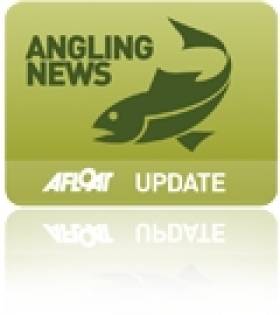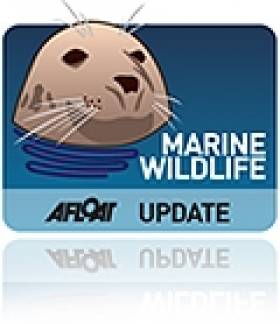Displaying items by tag: Co Mayo
Live in Luxury On Your Own Island Off the West Coast
#WATERFRONT PROPERTY - Ever wanted to own your own island? With Inishturk Beg now on the market, now might be your chance - if you've got a few million to spend!
The 65-acre island property, lying in Clew Bay in Co Mayo, is home to one of Ireland's most luxury developments, comprising a six-bed main residence with five other houses, a pier and a floating marina, among many other features.
The main house - designed by award-winning architect Andrew Wright - is 12,000 sq ft over two floors, and comes with an adjacent leisure complex with a gym, games room, indoor pool and hot tub, a cinema and even a ceili hall.
Other residences on the island include the 1,600 sq ft Pavillion, the 700 sq ft Reef Cottage, the 600 sq ft Yard Cottage and the spacious 3-bed Pier Cottage. There is also a boat house, American-style barns and the island's original pier.
Also available under separate negotiation is Stud Cottage, located on the mainland by at Rosstoughy Harbour, an inlet of Clew Bay, sitting on 25 acres and with additional outbuildings.
Inishturk Beg provides the utmost in luxury and privacy in a sheltered position to the side of Clew Bay providing stunning vistas to match - and is located a mere 10km from Westport and less than 70km from Knock Airport.
The island is on the market for €2,850,000 by private treaty through Knight Frank. Contact Harriet Grant at 01 662 3255 to arrange a viewing, which is strictly by appointment only. Much more details on this property are available HERE.
North Atlantic Killer Whales Feeding on Sunfish Says IWDG
#MARINE WILDLIFE - The Irish Whale and Dolphin Group (IWDG) has recorded another first for the North Atlantic, with evidence showing that killer whales are feeding on ocean sunfish.
Mark Holmes of the Natural History Museum confirmed the presence of parasites unique to the sunfish found within the carcass of a female orca stranded in Doohooma in Co Mayo.
"These parasites did not originate from the whale's stomach, but came from the prey which it had eaten," said the IWDG's Conor Ryan.
"This was confirmed when the partially digested bones in the stomachs were eventually identified as those of a sunfish beak."
The discovery may explain a recent study of UK waters which found sunfish taking unusually deep dives, possibly to avoid cetaceans and other large predators.
Humpback Whale Spotted Off Achill
#MARINE WILDLIFE - The Irish Whale and Dolphin Group has confirmed the sighting of a humpback whale off Achill Island in Co Mayo last weekend.
Surfers off Keel Beach were credited with the discovery, after spotting a large whale of 30-60ft breaking the surface multiple times, lifting its tail fluke vertically.
The sighting is only the fifth validated record of a humpback whale off the coastal area from Galway to Donegal.
"It remains something of a mystery as to why sightings of this species remain such relatively rare events along our west and northwest compared to our south and southwest coasts," says IWDG sightings co-ordinator Pádraig Whooley.
"This latest sighting is a timely reminder that species such as humpbacks can and do turn up in places that are well outside what we perceive to be the known 'hotspots'."
Humpback whales tend to feed in inshore waters, which should make them increasingly easier for the public to spot from the shore, he added.
The IWDG has more on the story HERE.
#MCIB - The decision to set out in poor weather, coupled with limited safety instruction, led to the tragic death of a Romanian angler on Lough Mask last summer, according to a report by the Marine Casualty Investigation Board (MCIB).
Mircea Ungur drowned after the angling boat he was in capsized in choppy waters brought on by squalling Force 8 winds on the afternoon of 8 May 2011.
Ungur had a tracheostomy tube in his throat resulting from a previous battle against throat cancer, and drowned after taking in water through this tube, the MCIB concluded. It was also found that most of his companions and the guide knew nothing about the tube.
At the time of the incident, Ungur had been on an angling holiday in Co Mayo with five colleagues accompanied by a fishing guide. On the morning of 8 May the group set out from Cappaduff in Tourmakeady on two boats, following a brief discussion about fishing and safe departure from the pier.
Winds were already reaching Force 4-6 when the group departed and sought a sheltered area of the lough to fish. After lunch winds had picked up to Force 8 and the guide signalled for a return to Tourmakeady.
At around 1.5km from the pier at Cappaduff, a wave swamped the leading boat that contained Ungur, a companion and the guide. All three on board, who were wearing buoyancy aids, went into the water.
Ungur was the first taken on board the other boat after some 10 minutes in the water. He was not moving or communicating with the others, and CPR was not administered until the boat reached the shore 20 minutes later. Ungur was pronouced dead just before 3pm.
The report concluded that the group had departed despite reservations among them about the poor weather, which had been correctly forecast that day. There was also little discussion with the anglers about their level of boating experience, the weather, or any disabilities that would affect their safety on the water.
The MCIB recommended that a full safety briefing should be given to all those hiring angling boats. It also urged the enforcement of safety regulations and certification for recreational water craft.
The full report is available to download as a PDF from the MCIB website HERE.
Bumper Catch at Rock House Fishery
Described by The Irish Times' Derek Evans as "one of the Great Fishing Houses of Ireland", the Rock House fishery in Co Mayo boasted banner numbers of salmon and sea trout catches this spring and summer.
April started off strong on the Owenduff River in Ballycroy, with three spring salmon weighing between 9.5lb and 12lb landed in the first two weeks.
This was followed by respectable numbers in May of 30 salmon and three sea trout. But June and July were the bumper time for angling, with thundery rain aiding the catch.
Even August proved bountiful despite lacking in fresh grilse, with 12 salmon ad 27 sea trout caught throughout the month.
"Drift netting laws appear to be having a positive effect," said Rock House's Sibylle Geffroy.
The Irish Times has more on the story HERE.
Irish Private Islands Up For Sale
Three private islands off Ireland's west coast are now up for sale - with the cheapest being a snip at just €150,000.
Irish Central reports that the three islands are currently offered via the website privateislandonline.com which aims at the rich-and-famous market.
Mannions Island, in west Cork's Dunmanus Bay, is priced less than the average family home in Dublin. For €150,000 the buyer gets a four-acre island that's 60% fertile just 200m from the shore (the catch is that there are no buildings).
Further up the coast at Clew Bay in Co Mayo is Island Mor, a 70-acre gem with views of the Inish Gort lighthouse and Croagh Patrick, which is going for €902,000. The location is a popular one for celebs - John Lennon was once an owner in Clew Bay.
Last but not least is Mutton Island, a mile from Seafield Harbour in Co Clare and just 20 miles south of the Aran Islands. The largest of the three at 185 acres, it also has a storied history, with the first recorded human settlement in 548 AD. Price is available on request.
Minister Grants Foreshore License for Corrib Pipeline
New Minister for the Environment Phil Hogan has signed off on a key foreshore licence to Shell Ireland, paving the way for the completion of the controversial Corrib gas project.
The Irish Times reports that the licence, subject to conditions, consents for the construction of the final 8km section of pipeline linking the Corrib gas field to Shell's onshore terminal at Ballinaboy. Co Mayo.
The scheme already has approval from An Bord Pleanála, and consents approved by former acting energy minister Pat Carey. But An Taisce has sought a judicial review of the planning decision, due before the High Court on Tuesday.
Still required by the developer before any work can begin are a revised emissions licence from the Environmental Protection Agency and a safety permit from the Commission for Energy Regulation under the Petroleum (Exploration and Extraction) Safety Act 2010.
The Irish Times has more on the story HERE.
- Natural Gas
- pipeline
- Corrib
- Corrib Gas field
- Corrib gas pipeline
- Shell Ireland
- Co Mayo
- Ballinaboy
- Minister for the Environment
- Phil Hogan
- Minister for Energy
- Pat Carey
- An Taisce
- An Bord Pleanála
- High Court
- judicial review
- Environmental Protection Agency
- Commission for Energy Regulation
- Petroleum (Exploration and Extraction) Safety Act 2010
Seal Sanctuary Sees Off Latest Releases
The Irish Seal Sanctuary celebrated the release of six grey seal pups from two different locations last weekend.
Dustin, Phoenix and Sean were released from Courtown Harbour, while Buddy Holly, Louise and Cookie were put into the water in Ballyferriter, Co Kerry with help from the Dingle Wildlife and Seal Sanctuary.
Sarah Forde, a volunteer at the Dingle sanctuary, told the Irish Independent that Buddy Holly was just 11kg in weight when he was brought in last October.
"Now, three months later, he's a healthy 44kg, the proper weight for a pup his age and in the next two years as he reaches maturity he'll grow to around 300kg," she said.
Louise and Cookie (pictured HERE) were found in a similar condition in beaches in Co Kerry after being abandoned by their mothers.
The Irish Seal Sanctuary's next release will be this Saturday 15 January when Cecil and Snowy, two seal pups rescued in Belmullet and rehabilitated at the sanctuary in Courtown, will be returned to the wild at Falmor Beach, Black Sod, Co Mayo.
Kid's Four Foot Yacht Completes Transatlantic Mission
A four foot yacht containing goodwill messages from children in the US state of Maine has landed on the west coast of Ireland, more than a year after it was launched. The craft survived at least two hurricanes on its journey of more than 4,000 miles across the Atlantic Ocean. A farmer stumbled across the unique vessel after it was washed up on a Co Mayo beach. The Irish Independent has the full story HERE.






































































